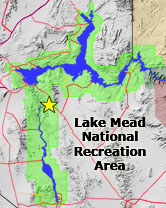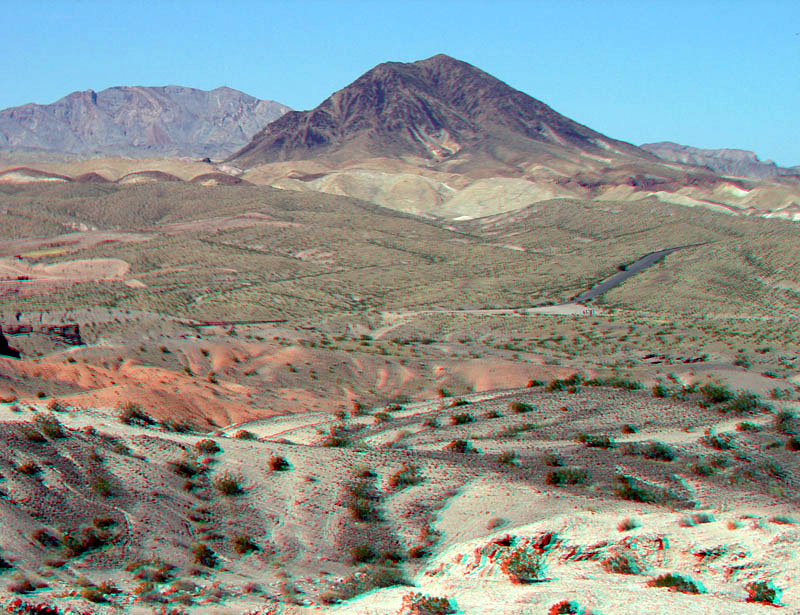 |
This view of Lava Butte is from the top of a gypsum-covered hill near milepost 10 on Lakeshore Scenic Drive. The brightly colored sediments around Lava Butte are part of the Horse Spring Formation, a sequence of continental basin-fill sediments that were deposited about 17 million years ago (early Middle Miocene). Lava Butte is not a volcano. It is made up of a volcanic rock called dacite. The rock formed when magma migrated toward the surface but became trapped between sedimentary layers in the Horse Spring Formation. Here the magma accumulated and cooled to become rock about 13 million years ago (Tingley and others, 2001; Beard and others, 2007). The feature is called a laccolith (a blister-like magma chamber). Later uplift and erosion exposed the rock at the surface. The dark appearance is from desert varnish, a natural dark patina that forms from weathering and concentration of iron and manganese oxides on the rock's surface. |



